–by Sharon Schroll
Month: April 2022
Eastern Tent Caterpillar
–by Raymond Cloyd – Horticultural Entomologyh
Eastern tent caterpillar, Malacosoma americanum, larvae (caterpillars) are emerging (eclosing) from eggs and feeding on the leaves of trees and shrubs. After emerging from the eggs, the caterpillars create a white, silken nest in the branch crotches of trees and shrubs (Figure 1)
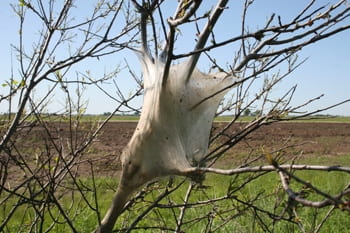
Figure 1. Eastern tent caterpillar silken nest (Raymond Cloyd, KSU)
including: birch, crabapple, hawthorn, mountain ash, poplar, willow, and flowering cherry, peach, and plum. The silken nest protects caterpillars from cold temperatures and natural predators.
Eastern tent caterpillars are black with a white stripe that extends the length of the body. In addition, there are blue markings on both sides of the body (Figure 2).
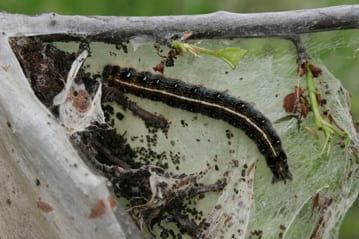
Figure 2. Eastern tent caterpillar larva (Raymond Cloyd, KSU)
Eastern tent caterpillar has five larval instars (stages between each molt). Eastern tent caterpillar is one of our earliest caterpillar defoliators, feeding on newly emerged leaves, which can reduce the ability of trees and shrubs to produce food by means of photosynthesis. Although feeding damage caused by Eastern tent caterpillar may not directly kill a tree or shrub, any decrease in photosynthesis can predispose plants to secondary pests such as wood-boring insects. Leaf quality can influence tree and shrub susceptibility. For example, black cherry, Prunus serotina, trees growing in the shade are fed upon less by Eastern tent caterpillars than those growing in full sun due to a lower leaf nutritional quality.
The young or early instar (first through third) caterpillars are active during the day and reside in the silken nest at night. Caterpillars emerge from the silken nest during the day and feed on plant leaves. Caterpillars remain inside the silken nest on over-cast or cloudy days. The final instar (fifth) caterpillar feeds only at night. The extent of feeding by caterpillars depends on temperature with caterpillars feeding for longer durations when exposed to warmer temperatures than when exposed to cooler temperatures. Eastern tent caterpillar overwinters as an egg mass attached to branches or small twigs (Figures 3 and 4). There is one generation per year in Kansas.
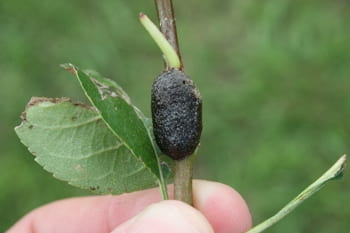
Figure 3. Eastern tent caterpillar egg mass attached to branch (Raymond Cloyd, KSU)
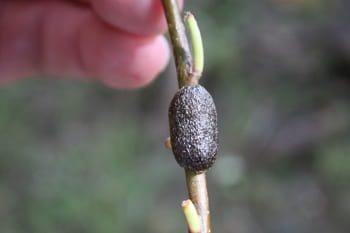
Figure 4. Eastern tent caterpillar egg mass attached to branch (Raymond Cloyd, KSU)
The management of Eastern tent caterpillar involves removing the silken nest by hand or using a rake. In addition, a high pressure water spray will destroy the silken nest. Consequently, any young exposed caterpillars are susceptible to predation by birds. However, the older caterpillars are fed upon less because they have hairs on their bodies that deters birds from feeding on them.
Spray applications of insecticides containing the bacterium, Bacillus thuringiensis subsp. kurstaki, or spinosad, as the active ingredient can be used to kill young caterpillars. These insecticides are stomach poisons so the caterpillars must ingest the material to be negatively affected. When caterpillars are older and approximately 2 inches (5 cm) long then pyrethroid-based insecticides, such as those containing the active ingredients, bifenthrin, cyfluthrin, lambda-cyhalothrin, or permethrin, should be applied. It is important to apply insecticides when caterpillars are active during the day, which will increase exposure to the insecticide spray residues. However, pyrethroid-based insecticides are harmful to pollinators (e.g. honey bees) and beneficial insects. Therefore, do not apply pyrethroid-based insecticides when pollinators are active. For more information on managing Eastern tent caterpillar populations contact your county or state extension specialist.
Bug Joke of the Week
— by Sharon Schroll
Bug Joke of the Week
Q: What goes 99 thump, 99 thump, 99 thump?
A: A centipede with a wooden leg.
Wheat Pests
–by Jeff Whitworth – Field Crop Entomology
Wheat (and alfalfa) continue to develop slowly throughout north central Kansas. Wheat mites, mostly winter grain and brown wheat mites, are still active throughout the central part of the state, but both species are slowly transitioning into their summer, non-feeding, stage (i.e., mite count in several fields averaged 50-60 winter grain mites per plant on 10 April, but only 7-10 per plant on 20 April). They have been feeding and thus competing with the plants for the little moisture that is present, thus we are often seeing the kind of feeding damage as in figure 1. Hopefully, adequate moisture plus the transition to the mite’s non-feeding stage will help these areas recover.

Figure 1 Mite damage on the Dickinson Co. line (picture by Jay Wisbey)
Bug Joke of the Week
–by Sharon Schroll
Q: What is totally funny and makes dogs itch?
A: The Flea Stooges!
Brown Wheat Mites
–by Anthony Zukoff — Entomology, Southwest Research and Extension Center
Reports of brown wheat mite outbreaks have come in from southwest and northwest Kansas in the last two weeks and the climate outlook for the region is likely to favor continued issues with this pest.
Brown wheat mite (Figure 1)

Figure 1. Brown wheat mite
is a sporadic pest of wheat in western Kansas but can also become problematic in eastern Kansas during dry years. Typically, continuous wheat faces a higher risk of damage from this pest and injury can be confused with drought stress. Mites damage individual cells in the leaf causing stippling while concentrated feeding at leaf tips causes plant tissue to dry out and die. Plants take on a scorched appearance and eventually wither (Figures 2 and 3).


Figure 3. Stippling caused by brown wheat mite feeding.
Brown wheat mites present in fields right now are from eggs that hatched last fall. They can easily survive cold temperatures and can produce multiple generations during the winter and an additional two to three generations in the spring. These mites are active during the day and peak activity is during the afternoon on warm days. They do not produce webbing like spider mites and can easily be observed moving rapidly on leaf surfaces when scouting a field. Their rapid movement and tendency to drop to the ground when disturbed can make assessing the level of infestation difficult.
The economic threshold is estimated to be several hundred mites per foot of row in early spring; stressed plants are most likely to succumb to damage. A solid rainfall is typically all that is needed to knock brown wheat mite populations below damaging levels, but that does not look to be in the forecast any time soon. Fields with noticeable populations of mites should be scouted for their eggs. Brown wheat mites lay two different types of eggs on soil clods and debris; red “winter” eggs and white “summer” eggs (Figure 4).

Figure 4. Brown wheat mite eggs. Left: winter eggs that will be hatching now, Right: summer eggs that will be hatching in the fall.
The white eggs will remain dormant through the rest of the growing season and hatch in the fall. Red eggs will continue to hatch this spring and add to the current population. By late April, adults begin to lay the white, diapausing eggs. Once there are more white eggs in the field than red eggs, the population is naturally declining and treatment is not likely warranted.
For fields that require treatment, options for control of brown wheat mite are limited as there are no miticides registered for use in wheat and a popular option for control, chlorpyrifos, is no longer available. Dimethoate continues to provide good control of this mite, but there are some options for suppression of brown wheat mite populations when treatment is warranted and dimethoate is not an option (Table 1). As always, be sure to follow all directions on the labels for proper use of any chemical.
Table 1. Products registered in Kansas for control or suppression of brown wheat mite. For more specific information relative to any insecticide, always refer to the actual label on the product.
| Trade Name | Chemical Name | Mode of Action Class | Purpose | Rate |
| Dimethoate | Dimethoate | 1B | Control | .3-.5 pint/A (.16-.25 lb a.i./A |
| Besiege | Lambda-cyhalothrin and chlorantraniliprole | 3A+28 | Suppression | 10 fl.oz/A |
| Proaxis | Gamma-cyhalothrin | 3A | Suppression | 3.84 fl.oz/A (.015 lb a.i./A) |
| Silencer | Lambda-cyhalothrin | 3A | Suppression | 3.84 fl.oz/A (.03 lb a.i./A) |
| Warrior II with Zeon Technology | Lambda-cyhalothrin | 3A | Suppression | 1.92 fl.oz/A (.03 lb a.i./A) |
Alfalfa Pests (alfalfa weevils, pea aphids, cowpea aphids)
–by Jeff Whitworth, Field Crops Entomology
Alfalfa weevils (see fig 1) have been hatching from eggs over about the last two weeks. However, they have not been developing very quickly, nor has the alfalfa, at least throughout north central Kansas. There will be more larvae. This is always a problem for producers, to treat early or not, especially with less foliage to accept the insecticide. If your treatment threshold is reached, irregardless of time it’s probably prudent to make an insecticide application as soon as possible. Less foliage may mean better coverage and therefore kill. But, it also probably means less foliage to accept the spray and thus there may be a little less residual control. But this is always part of alfalfa weevil management.
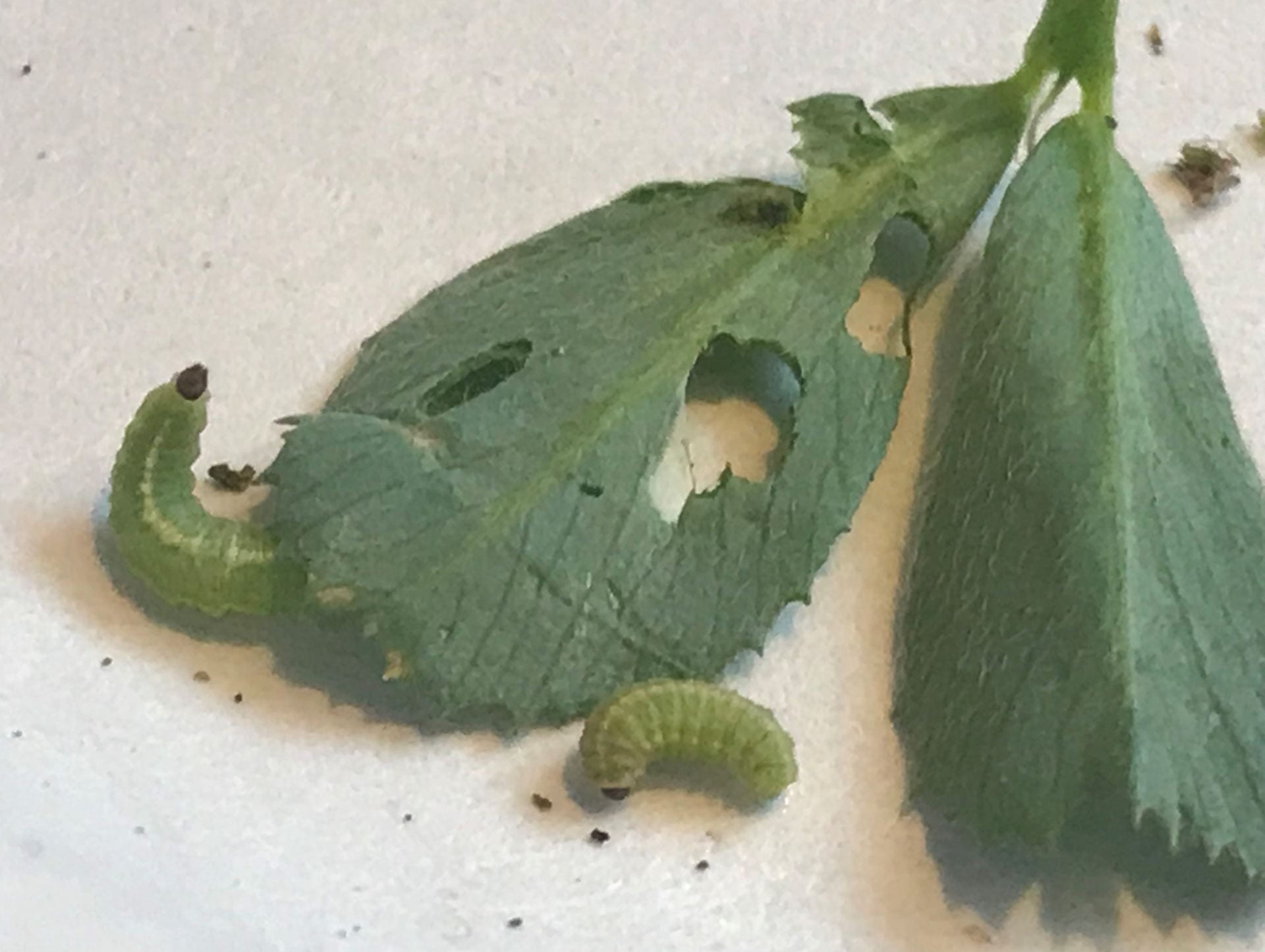
Figure 1 Alfalfa weevil larvae and leaf damage
We also see conspicuous aphid populations all around the state—both pea (see fig 2) and cowpea (see fig 3). These aphids are causing concern, especially in areas where moisture is lacking. However, these aphids usually do not buildup to the density to actually reduce yield but more often provide a food source for many beneficials if left untreated.

Figure 2 Pea aphids
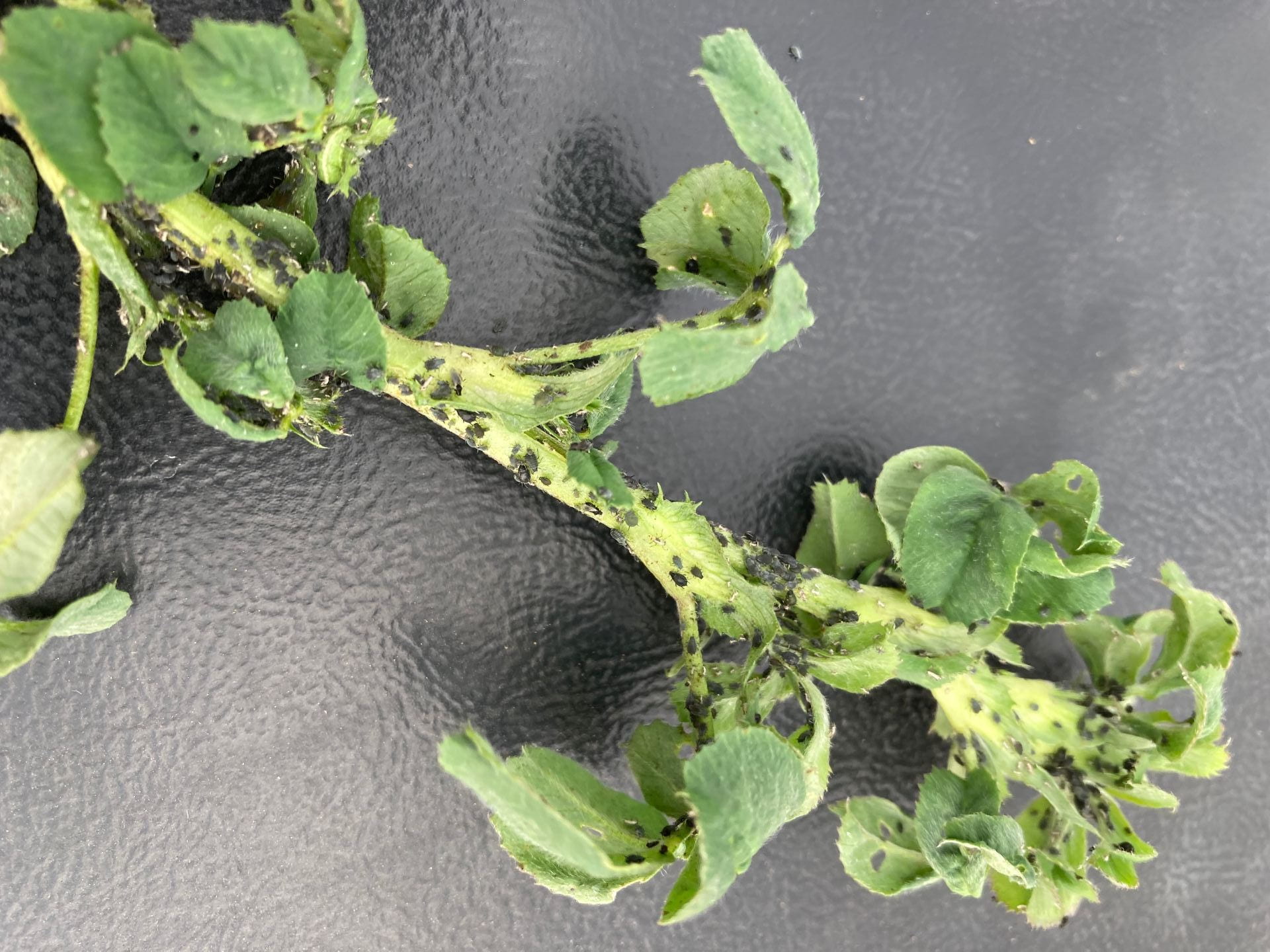
Figure 3 Cowpea aphids (received from Ed Beason)
Clover Mites Are Entering Homes!
–by Raymond Cloyd, Horticultural Entomology
We have received a number of inquiries regarding homes being invaded by populations of the clover mite, Bryobia praetiosa. Now is the time of year when clover mites enter homes, apartments, or commercial buildings, with extensive numbers crawling around and causing people to be somewhat concerned regarding how to deal with the problem.
Clover mites typically enter homes and buildings from a southwest exposure. Once inside, clover mites aggregate in large numbers in the corners of homes and buildings (Figure 1).
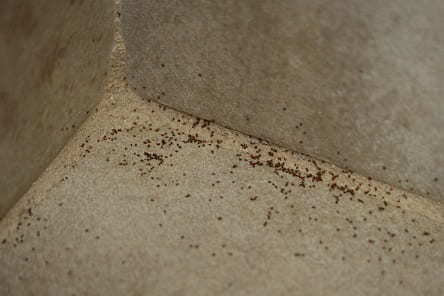
Figure 1. Clover mites aggregating in the corner of a building (Raymond Cloyd, KSU)
Clover mites are primarily a nuisance mite pest because they do not bite humans. However, clover mites will leave a red stain when purposely or accidently crushed.
Clover mite populations only consist of females as males have never been found. Adult clover mites are 1/30 of an inch long, red, with long, pink front legs (Figure 2)

Figure 2. Adult clover
that are used to distinguish clover mites from other mite pests. Clover mites overwinter as eggs in protected locations and there is usually one generation per year in Kansas. Adults feed on over 200 plant types including: clover, grasses, ivy, honeysuckle, apple, freesia, and elm. Clover mite populations can be extensive in well-fertilized turfgrass located near foundations and their feeding will cause turfgrass to appear silvery or frosty.
The management of clover mites involves the following:
1) Remove turfgrass near building foundations.
2) Place an 18 to 36-inch wide band of an inorganic mulch around the foundation of homes and buildings.
3) Mow turfgrass as short as possible.
4) Avoid over-fertilizing turfgrass, especially with water-soluble, nitrogen-based fertilizers.
5) Remove weeds growing around the foundation.
6) Remove or limit the growth of ivy or other host plants growing around the foundation or walls.
7) Use plants near the foundation that are not typically attractive to clover mites, including: marigold, petunia, geranium, arborvitae, and/or yew.
8) Caulk or seal cracks or openings in the foundation or around window seals.
Clover mites inside homes or building can be vacuumed up, however, be sure to avoid crushing them. Clover mites can be captured on sticky tape (Figure 3)

Figure 3. Clover mites captured on sticky tape (Raymond Cloyd, KSU)
placed near openings such as window seals. Pesticides that contain the active ingredient permethrin can be applied around the perimeter of homes or buildings to kill clover mites, which will reduce the number entering homes and buildings. However, do not apply pesticides inside homes or buildings. If necessary, consult with a pest management professional for recommendations regarding perimeter treatments of pesticides with miticidal activity that will prevent clover mites from entering homes or buildings.